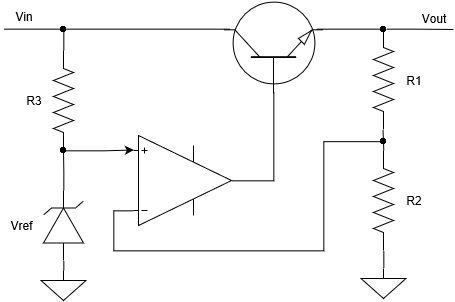Linear Regulators
There are two main types of DC:DC power converters: Linear Regulators, and Switching Regulators. Linear regulators are relatively simple but are typically much less efficient than the more complex switching regulators. For either type of DC power converter, the inefficiency of power conversion is dissipated in the form of heat.

A linear regulator produces an output voltage derived from the input voltage through a transistor that is controlled by feedback. The output voltage is divided down and compared against a reference voltage with a comparator that drives the base of the transistor. Feedback is connected to the negative input of the comparator, because in that configuration the base of the transistor gets turned on when output voltage goes down making the transistor turn on more and reduce resistance between Vin and Vout.
In high-level terms a linear regulator is like a controller resistor. The current flowing in is essentially the same as the current flowing out, since the control circuitry draws a trivial amount of current compared to the current drawn by the power load. Like with all electronic components the power dissipated by the linear regulator is the voltage across it times the current through it. Dissipated power is also equal to the input power minus the output power by the Law of Conservation of Energy.

